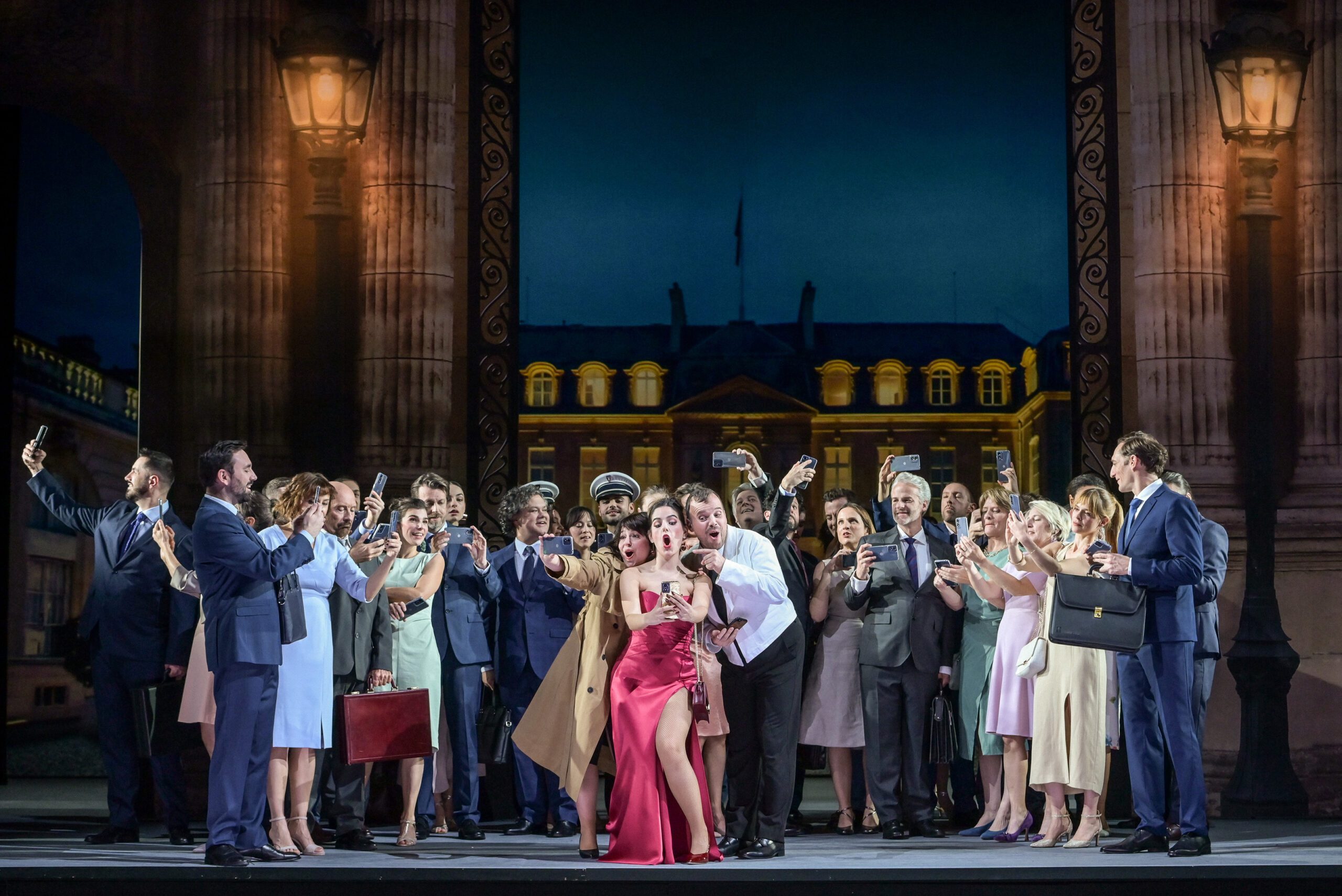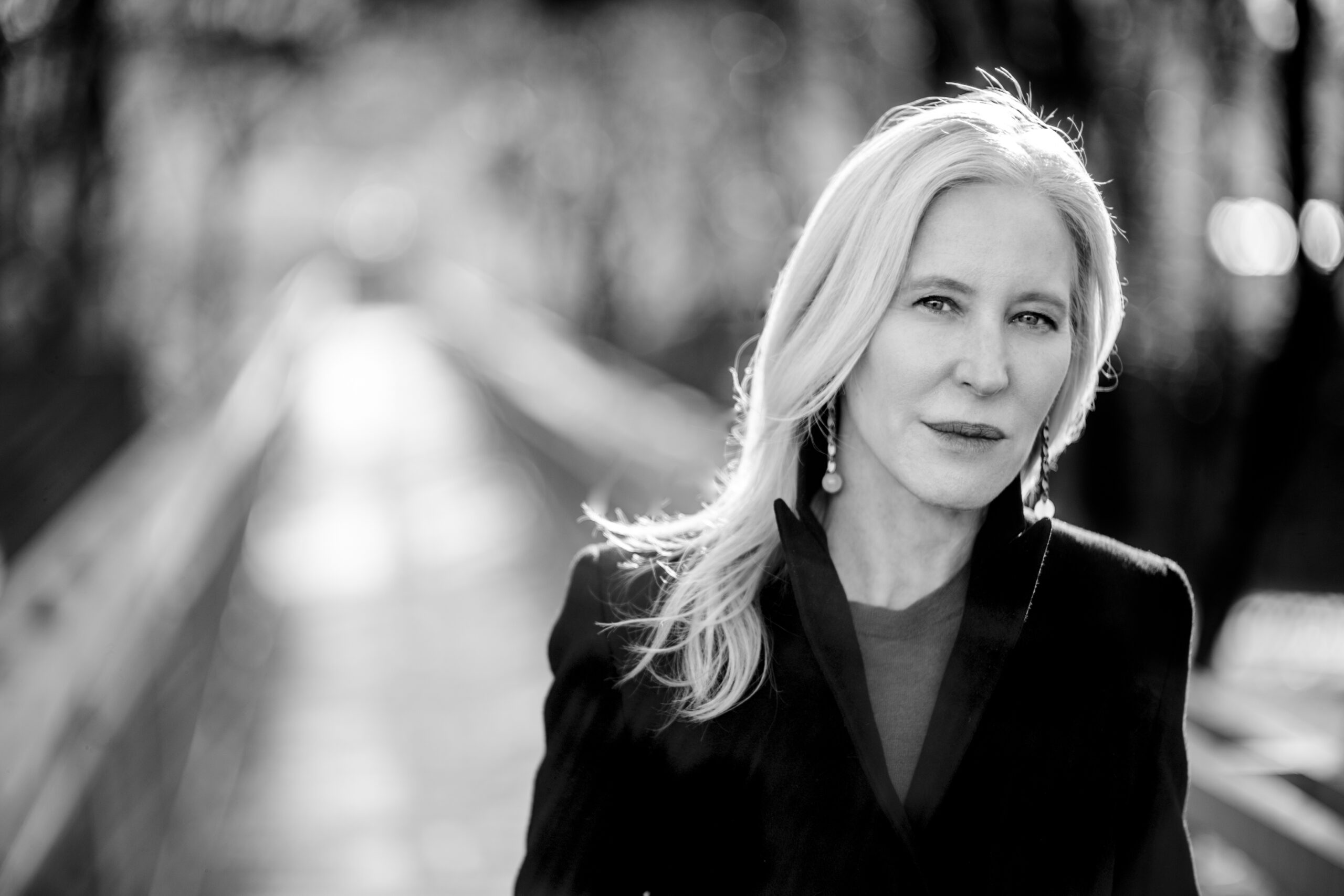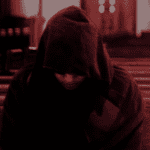Robert Carsen has a knack for mirroring contemporary events in his productions. But with this staging of Rameau’s Les Fêtes d’Hébé, he also seems capable of predicting them. He started preparing and rehearsing over six months ago, playfully spoofing France’s President Emmanuel Macron, who once described his vision of the President as akin to Jupiter – commanding, powerful and removed, like the god ruling from the heights of Mount Olympus. The comparaison was witty enough, but the coincidence of Carsen’s production opening on the very day Macron appointed a new and controversial Prime Minister, François Bayrou, was uncanny. Against this backdrop – France in turmoil and without a functioning government for weeks – Carsen’s reinterpretation of Rameau’s opéra-ballet as a satire of power, banishment and renewal took on an unplanned but striking resonance.
The curtain rises not on Olympus, but on the Presidential Palais de l’Élysée, with Macron as Jupiter presiding over a state reception. Hébé, goddess of youth, is recast as a clumsy waitress who spills wine on Brigitte Macron’s pristine white suit and is promptly exiled. This lighthearted premise sets the stage for three entries – celebrations of Poetry, Music, and Dance – reimagined as vignettes of modern Parisian life along the Seine.
Jean-Philippe Rameau’s Les Fêtes d’Hébé, composed in 1739, is often criticized for its lack of cohesion. Thus, for Carsen, staging it meant finding a unifying concept to connect its episodic structure. Collaborating with set and costume designer Gideon Davey, the Canadian director drew inspiration from Paris-Plages, the summer program that transforms parts of the Seine into artificial beaches. “Paris-Plages is a delightful fantasy,” Carsen explains in the production’s program. “Everyone knows they’re not actually at a beach, but since they can’t go to the sea, they pretend, in a festive and humorous atmosphere.”
This idea shaped the settings for the three entries. Poetry unfolds on Paris-Plages, with sunbathers enjoying a summer day by the Seine. Music sees Iphise marrying a victorious soccer captain amid jubilant fans near the bookstalls of the quays. Finally, Dance transforms into a nightclub aboard a bateau-mouche, where DJ Mercury blends baroque and modern sounds for Eglé’s festivities.
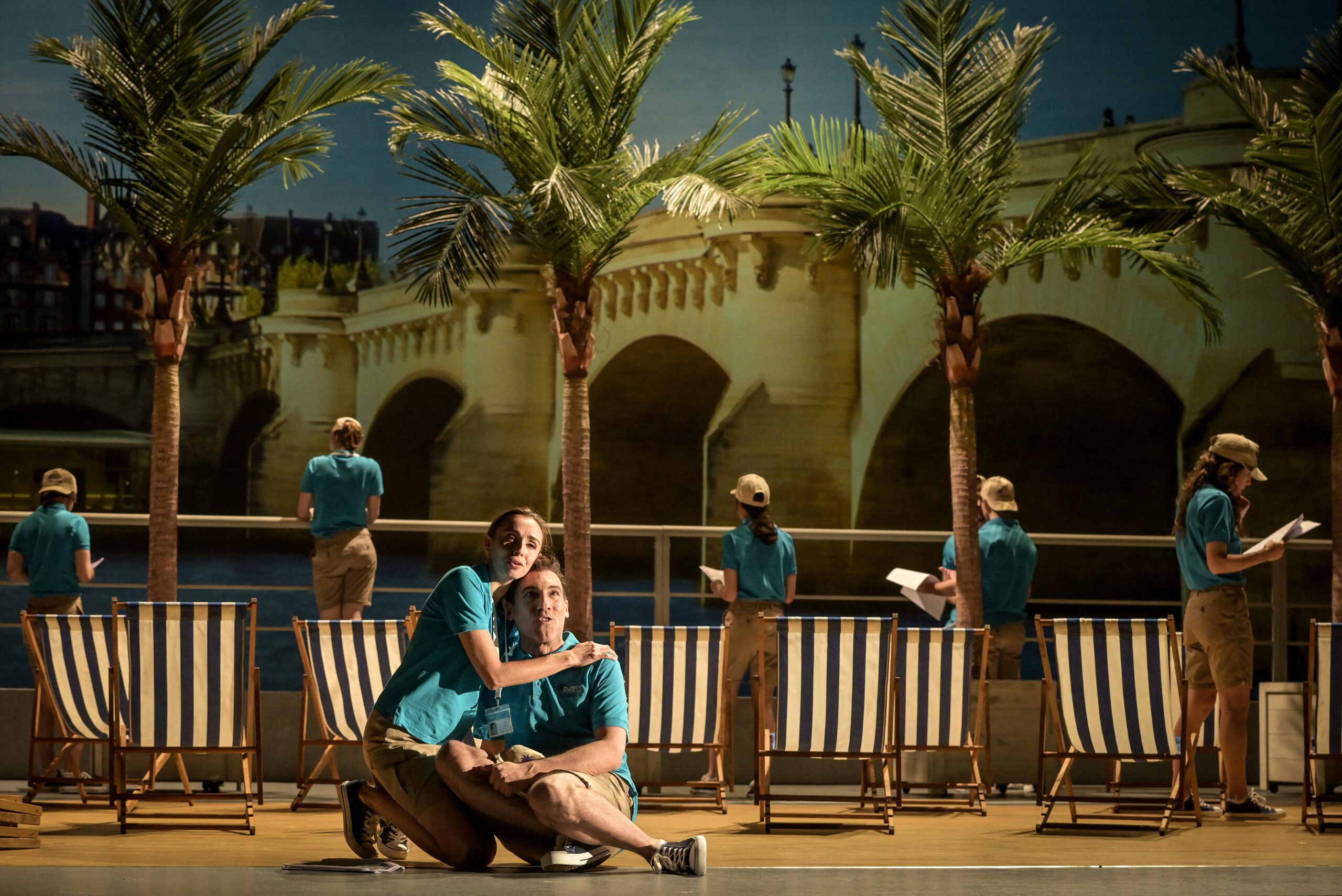
Photo Credit: Vincent Pontet
Lea Desandre (Sappho) and Antonin Rondepierre (Thélème) at Paris-Plages
William Christie, celebrating his 80th birthday on December 19th, lead his long-time ensemble Les Arts Florissants with balance, precision and vitality, fully capturing the delicacy of the vocal lines and the rhythmic energy of the dances. Having collaborated for over three decades, Christie and Carsen share a close artistic connection. Reflecting on this, Carsen wrote, “Our first Rameau was Les Boréades 20 years ago at the Opéra de Paris. Working on baroque music with William is always inspiring, and I learn so much from him.”
The cast brought both vocal excellence and theatrical flair. Lea Desandre, performing the tritych of roles (Sapho, Iphise and Eglé), gave each character a distinct presence. As Iphise, entering in an Anna Pavlova white dress, her aria “Pour rendre à mon hymen” was exquisitly ethereal, and she closed the scene with a graceful, swanlike dance solo worthy of a prima ballerina.
Ana Vieira Leite delivered engaging performances as Amour, le ruisseau and une bergère, humorously updated as a social media influencer broadcasting live videos. While her comedic timing was sharp, her phrasing was smooth and tone vibrant. Emmanuelle de Negri captivated the audience with her verve and stage presence as Hébé. Her aria, “Accourez, riante jeunesse” emerged as one of the evening’s highlights. Cyril Auvity brought clarity and ease to the roles of le ruisseau and Lycurgue, managing Rameau’s demanding vocal lines with assurance. After an underwhelming appearance as Momus, Marc Mauillon returned as Mercure with depth and theatricality. He combined vocal power and agile ornamentation in the aria “L’objet qui règne dans mon âme.”
Choreographer Nicolas Paul unified the movement throughout the production, involving everyone – from the chorus to the professional dancers. The standout moment was the “football ballet,” where the dancers combined mime, hip-hop, athleticism and stunning ensemble work. The sequence also served as a playful jab at Macron’s well-known enthusiasm for football and pride in the French national team.
At the curtain call, with a standing ovation from the audience, the orchestra reprised a lively passage while 80-year-old Christie and the entire cast joined in a snippet of wild hip-hop dancing. It was a joyous, slightly absurd finale – one could almost picture Macron and Brigitte joining in.
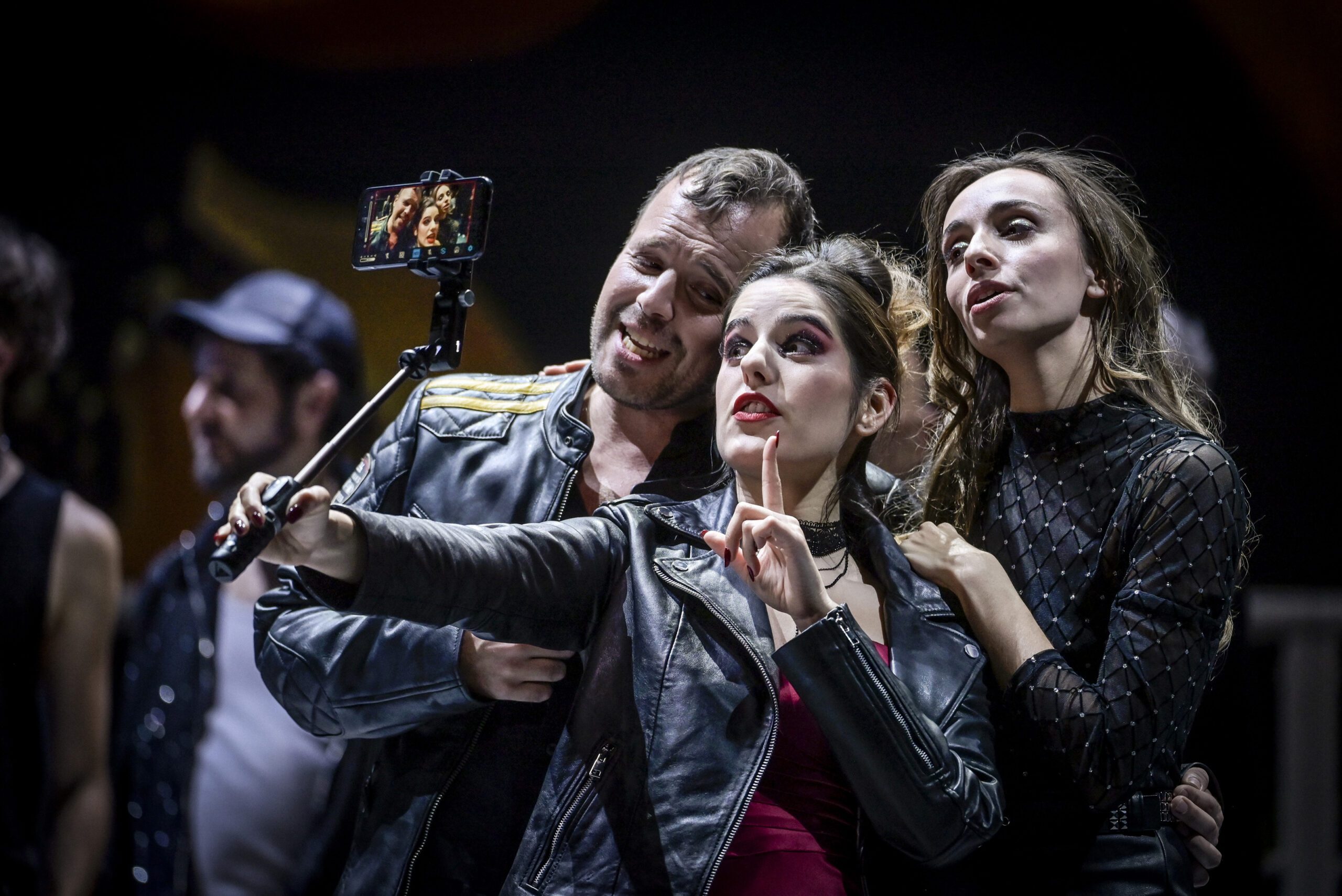
Photo Credit: Vincent Pontet
Mercure (Marc Mauillon), Une Bergère (Ana Vieira Leite) and Eglé (Lea Desandre) in the final entrée of Les Fêtes d’Hébé
Opera Canada depends on the generous contributions of its supporters to bring readers outstanding, in-depth coverage of opera in Canada and beyond. Please consider subscribing or donating today.

